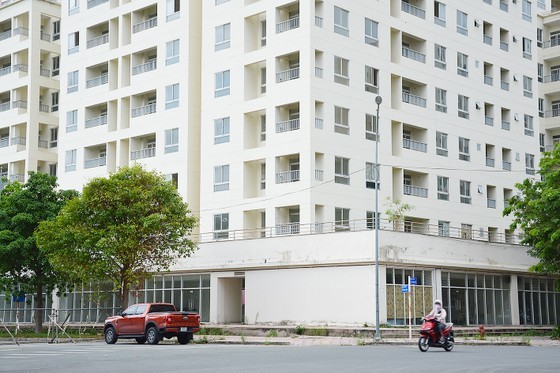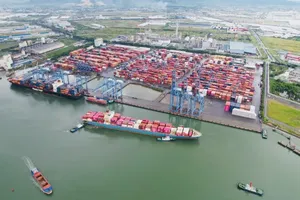 |
The Binh Khanh resettlement apartment block is left abandoned for years |
At present, Ho Chi Minh City is planning to build tens of thousands of apartments for low-income people, resettlement, and social housing. However, the city needs to review these abandoned residential buildings that have been built for many years.
Thousands of apartments have been left deserted for years, causing huge waste
Thousands of apartments have been left deserted for years, causing huge waste. For instance, Vinh Loc B Resettlement Area in Binh Chanh District about 20km from the center of Ho Chi Minh City was built on an area of 31ha with a total cost of VND1,062 billion for people whose lands have been cleared of the site clearance for infrastructure projects in Ho Chi Minh City since 2013.
More than 500 resettlement sites and 45 apartment blocks with nearly 2,000 apartments were built 10 years ago but many apartment blocks are still vacant because many households disagreed to live there.
The apartment block with five floors has no elevator. Worse, many items such as walls, and railings are peeling and degraded while the campus around the grass is overgrown and the entrance to the resettlement site turns into a muddy field every time it rains.
48 years old Luong Thi Tai said that she and her husband and two children moved to this resettlement area to live when Ho Chi Minh City renovated the Tan Hoa - Lo Gom canal in District 6. For the past 10 years, her family has had to work many jobs to make a living. Her husband rides a motorbike taxi every day in District 6, returning to the Vinh Loc B resettlement area in the evening. Due to the distance between District 6 and Binh Chanh District, her husband spends much on petrol; as a result, his income reduces a lot. That is why people refused to live in the resettlement areas and many apartment buildings here are still vacant.
By June 2023, residents lived in 23 apartment blocks and there are still 22 vacant apartment blocks. The city pays about VND5-6 billion for annual operating costs. Therefore, from the beginning of 2022, Ho Chi Minh City decided to hand over empty apartment blocks in the Vinh Loc B resettlement area to the Center for Housing Management and Construction Inspection under the City Department of Construction.
Only about 3km from the center of District 1, the Binh Khanh resettlement building in an area of 38.4 hectares in the center of the Thu Thiem peninsula of Thu Duc City suffers the same fate. The largest resettlement area in Ho Chi Minh City with 12,500 apartments was completed in 2015. However, since then, many blocks are in serious disrepair because no one lives in it.
An on-site resettlement policy is necessary
According to Mr. Nguyen Duc Lap, Director of the Real Estate Research and Training Institute, a good resettlement apartment project needs to meet the needs and desires of inhabitants in the cleared area, and at the same time solve the problems like basic social security. The new place of residence needs to ensure better technical and social infrastructure than the old one in addition to livelihood for the people, especially the residents who have to change careers when living in new resettlement areas. Another reason why thousands of apartments are abandoned is that the house price in the resettlement area is higher than the compensation value at the old place, so people can’t afford it.
Meanwhile, Mr. Tran Du Lich, a member of the National Monetary and Financial Policy Advisory Council, suggested the planning adjustment of some industrial parks and export processing zones to create a land fund that will be given to social housing construction enterprises. From his point of view, Mr. Lich said that Ho Chi Minh City should associate the development of social housing with the relocation and renovation of old apartments and treatment of canal houses according to the set goals, including environmental settlement, urban embellishment and housing fund.
Accordingly, there should be an on-site resettlement policy for people so that people don’t need to live in far-way resettlement areas for the convenience of their present job and their children's studies. The urban embellishment and clearance of old slums and apartment buildings must be consistent with dwellers’ wishes.
























